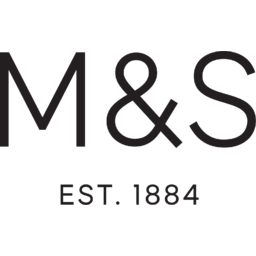
P/E ratio for Marks & Spencer (MKS.L)
P/E ratio at the end of 2023: 9.50
According to Marks & Spencer's latest financial reports and stock price the company's current price-to-earnings ratio (TTM) is 0. At the end of 2023 the company had a P/E ratio of 9.50.
P/E ratio history for Marks & Spencer from 2001 to 2023
PE ratio at the end of each year
| Year | P/E ratio | Change |
|---|---|---|
| 2023 | 9.50 | -6.64% |
| 2022 | 10.2 | -169.68% |
| 2021 | -14.6 | -118.1% |
| 2020 | 80.7 | -25.31% |
| 2019 | 108 | -31.52% |
| 2018 | 158 | 226.13% |
| 2017 | 48.4 | 225.65% |
| 2016 | 14.9 | -7.4% |
| 2015 | 16.0 | 43.9% |
| 2014 | 11.1 | -7.1% |
| 2013 | 12.0 | 25.65% |
| 2012 | 9.55 | 33.3% |
| 2011 | 7.16 | -24.82% |
| 2010 | 9.53 | 27.29% |
| 2009 | 7.49 | 37.26% |
| 2008 | 5.45 | -52.45% |
| 2007 | 11.5 | -13.7% |
| 2006 | 13.3 | 61.76% |
| 2005 | 8.22 | -0.09% |
| 2004 | 8.22 | -42.99% |
| 2003 | 14.4 | -80.77% |
| 2002 | 75.0 | -105.36% |
| 2001 | < -1000 |
How to read a P/E ratio?
The Price/Earnings ratio measures the relationship between a company's stock price and its earnings per share. A low but positive P/E ratio stands for a company that is generating high earnings compared to its current valuation and might be undervalued. A company with a high negative (near 0) P/E ratio stands for a company that is generating heavy losses compared to its current valuation.
Companies with a P/E ratio over 30 or a negative one are generaly seen as "growth stocks" meaning that investors typically expect the company to grow or to become profitable in the future.
Companies with a positive P/E ratio bellow 10 are generally seen as "value stocks" meaning that the company is already very profitable and unlikely to strong growth in the future.